For far too long barbecue, grits and cornbread have defined outsiders’ perceptions of the American Southerner’s diet.
There will always be room at the table for these staples, but Southern food is both evolving and returning to its roots as it redefines its center.
Chefs from the South travel and train abroad, then return stateside to bring their skills to bear on the region’s rich agricultural resources. Transplants from across the USA and around the world are blending culinary traditions. The farm-to-table movement has whetted appetites for seasonal dishes from crops that flourish in the South’s humid subtropical climate.
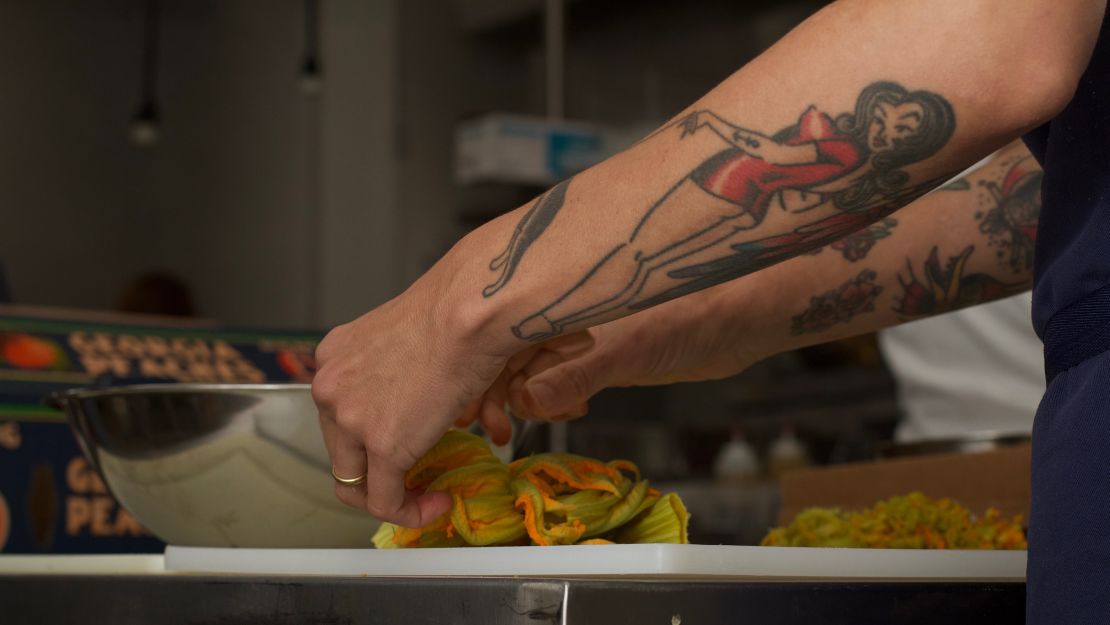
To many Southern chefs, Grandma’s kitchen remains their guiding light as they navigate the evolving landscape. We spoke earlier this year to to four acclaimed chefs at the 2017 Atlanta Food & Wine Festival who are putting their own stamp on quintessential Southern fare. They invited us into the kitchen at the festival’s annual women’s-only dinner and shared their methods.
Katie Button, executive chef and co-owner of Cúrate Tapas Bar and Nightbell, Asheville, North Carolina
Katie Button gave up a prospective career in biomedical engineering so she could work her way up from a server in José Andrés’ American restaurants to the kitchen of Ferran Adrià’s world-renowned elBulli in Spain. She returned to the South eager to draw from its agricultural bounty for her first restaurant, Cúrate Tapas (13 Biltmore Ave, Asheville, NC 28801; +1 828-239-2946).
Button starts each dish with a protein. Ideally, it’s from a local purveyor near her base of operations in Asheville, a bustling hub in the Smoky Mountains where hippies flex their entrepreneurial muscles.
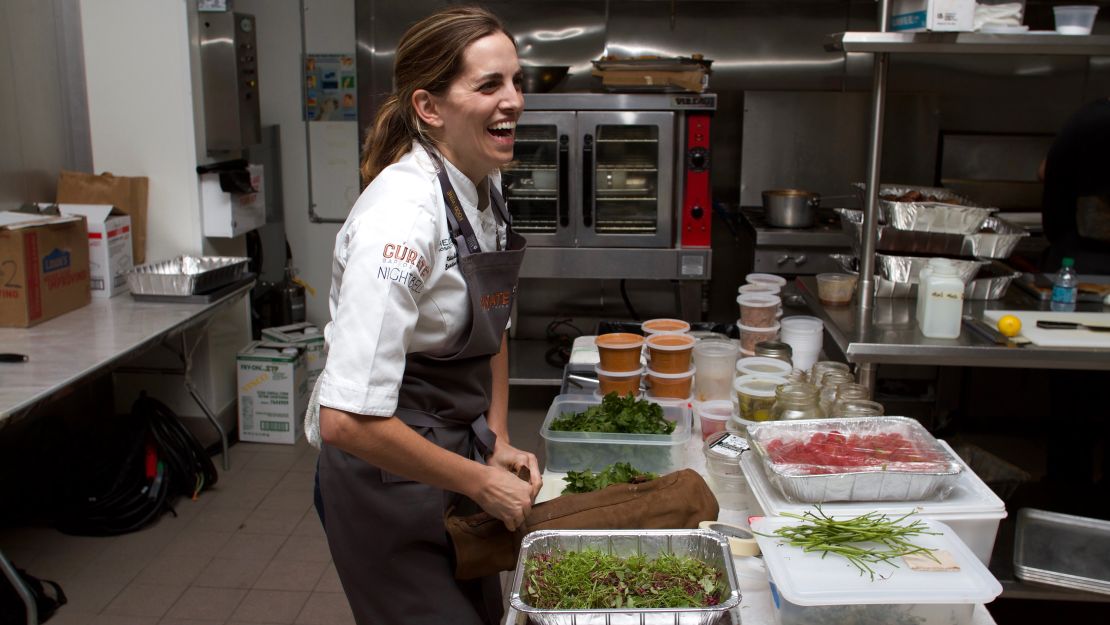
For this dinner, she asked her friends at Heritage Farms Cheshire Pork what they had in surplus and she ended up with pork cheeks. To balance the pork’s richness she took advantage of an abundance of two more local favorites in season: tomatoes and peanuts.
Boiled peanuts are a treasured roadside snack in gas stations and bootleg food stands across the South if you can get past their wrinkled appearance. Button used boiled peanuts in place of almonds or hazelnuts to form the base of the classic Spanish-Catalan romesco sauce.
Add pickled tomatoes to the romesco-braised pork cheeks and the peanut takes on a bold flavor, she says.
“When you taste the sauce on its own it’s peanut-forward. But with the rest of dish it come together and the acidity from the tomatoes and the richness of pork bring out a new flavor,” she adds.
“The romesco ends up the star even though it started with pork cheeks.”
Annie Pettry, executive chef and owner of Decca, Louisville, Kentucky
Annie Pettry grew up fishing for trout, foraging for mushrooms and growing vegetables in the family garden in Asheville. The Top Chef Season 14 contestant trained in New York’s French Culinary Institute, now the International Culinary Institute. She worked with renowned chefs Craig Koketsu, Elliott Moss and Loretta Keller before moving to Louisiana in 2012 to start her own restaurant at Keller’s urging.
At Decca (812 East Market St. Louisville, KY; +502 749 8128), Pettry strives to apply classic French technique to Southern ingredients to create her own take on soulful American cuisine.
Case in point: hush puppies with pimento cheese and hot pepper jelly.
“I just want to do a really good hush puppy by capturing its essence,” she says.
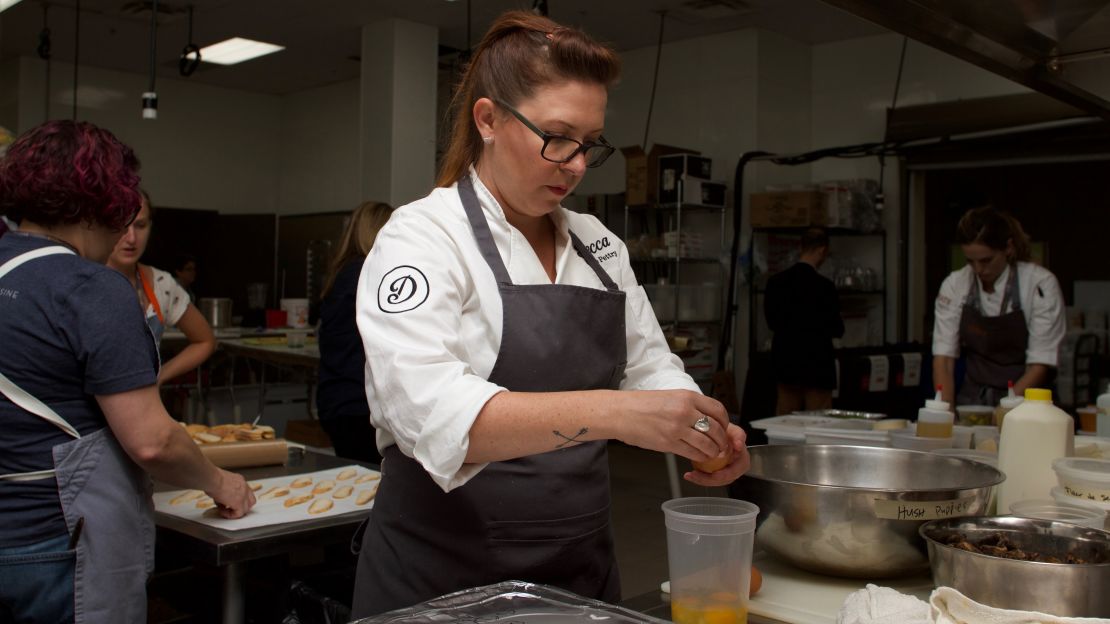
To Pettry, nailing the fried cornmeal fritter’s essence means getting the perfect batter. She uses melted butter instead of cold chunks to ensure maximum fluffiness, adding it to medium ground cornmeal and bits of onion. And, it has to be light and fluffy on the inside and crunchy on the outside, a balance achieved by deep-frying it to just the right deep golden color.
“A really good hush puppy has good corn flavor and pieces of onion or it’s not going to hit the spot for me.”
But let’s face it, even the best hush puppy borders on bland depending on your palette. To spice things up, Pettry chose a family favorite: the cheese log covered in pepper jelly, and deconstructed it into pimento cheese and hot pepper jelly to complement the hush puppies.
For the pimento cheese, she roasted red peppers on a wood-fired grill instead of using the stovetop like her mother did to roast peppers. She used her own recipe of fresh ingredients for the cheese and the pepper jelly to create what she calls a “Southern powerhouse in one bite.”
Rebecca Masson, chef and owner, Fluff Bake Bar, Houston, Texas
Pastry chef Rebecca Masson says she wants all her cakes to taste like Grandma’s, but “on steroids.”
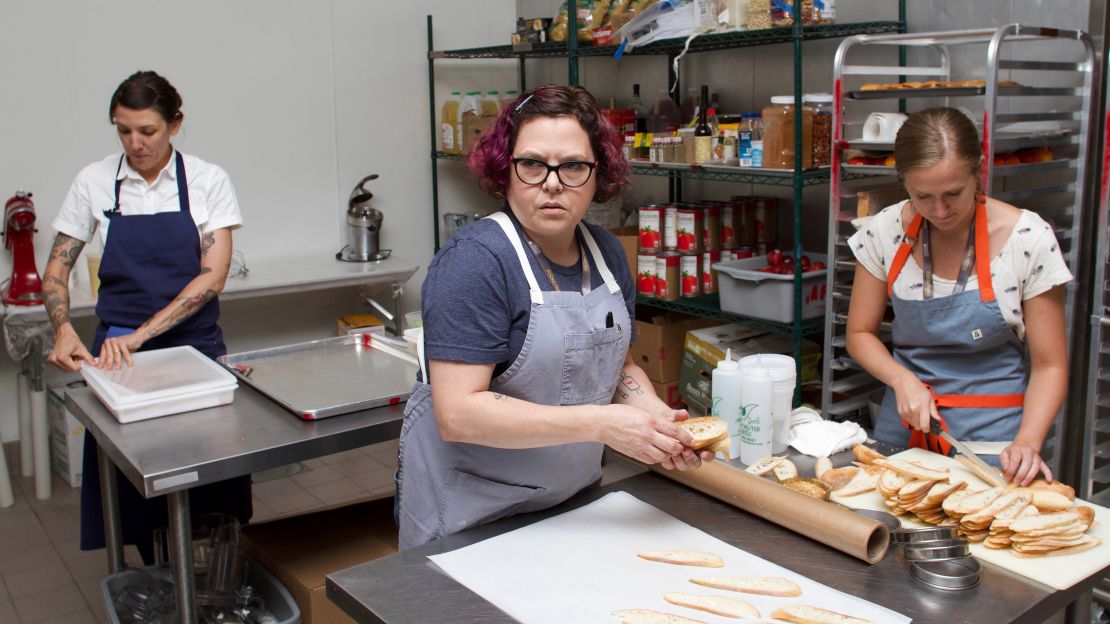
Masson, the owner of Houston’s Fluff Bake Bar (314 Gray St, Houston, TX 77002; +713 522 1900), takes a Texas-sized leap of faith to combine seemingly incongruous flavors. Like Button, she chooses a central ingredient and builds on it with seasonal elements.
For this meal, she started with pound cake just like her grandmother used to make for Masson as a child growing up in Wyoming. For her version, Masson added pistachios to the mix, yielding an electric green sponge cake that makes the perfect canvas for a deliciously Instagrammable dessert.
“You can add almost any flavor to pound cake, it goes with so many things,” she says. “It helps to start with a familiar base and build on it.”
She dressed up the cake with candied pistachios, fennel confit and caramelized white namelaka, a creamy Japanese chocolate sauce formed into lattice-like adornments.
“Everyone loves pound cake. I use it whenever I can,” she says. “It’s almost like salad in its versatility.”
Whitney Otawka, culinary director, Greyfield Inn, Cumberland Island, Georgia
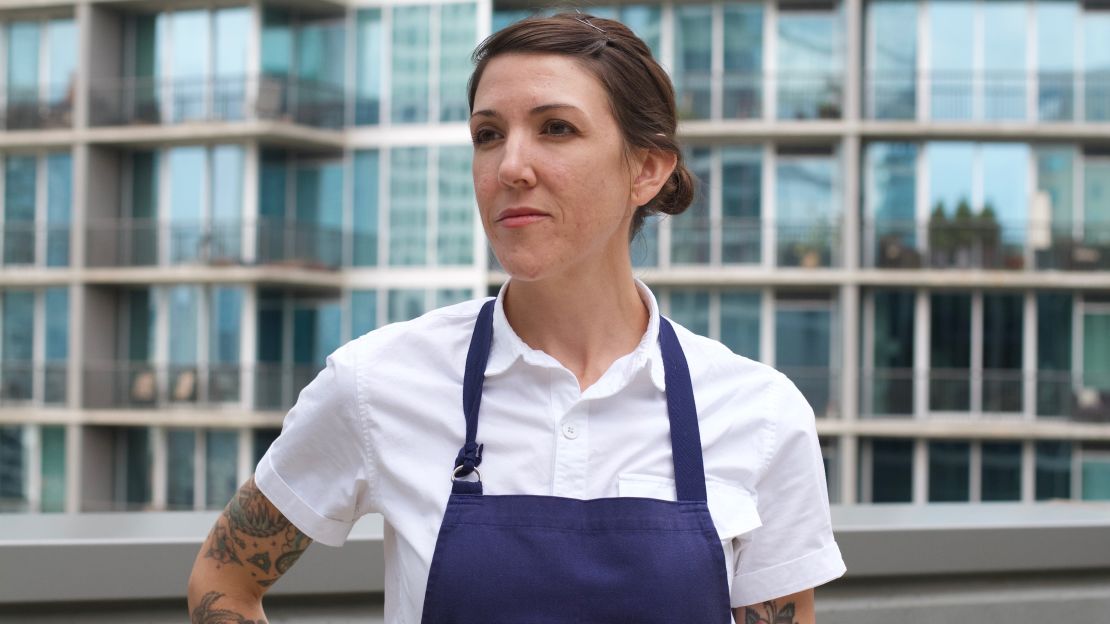
Toward the back of the kitchen, Whitney Otawka peeled white Georgia shrimp while her husband pressed mini hot dog buns on a grill for a Southern twist on a lobster roll. Otawka is the name and face of their partnership, having built her reputation on “Top Chef” Season 9 and stints in Hugh Acheson’s restaurants. Now, she’s culinary director of the historic Greyfield Inn (4 North 2nd St, Cumberland Island, GA 32034; +1 904-261-6408), a dreamy retreat tucked into dense oaks and pine forests on Georgia’s Cumberland Island.
On most mornings she wakes up and walks out to the inn’s garden to see how their crops are faring. She sources most of her ingredients from the garden and the island, using seasonal produce and fresh catch to create meals that reflect the moment.
To Otawka, eating locally and in season is a way of life. It gives you a sense of place, she says. Take, for example, the shrimp from coastal Georgia in her rolls. They feed and give birth in the marshes of Georgia’s barrier islands, and the grass gives them a sweet taste.
“You don’t have to manipulate as much when you have pure, fantastic ingredients,” she says. “If we learn to identify the things that grow well in our regions I think we can have a better impact on the way food is served.”




